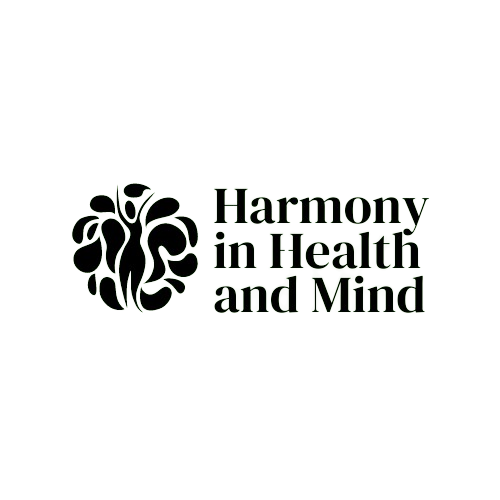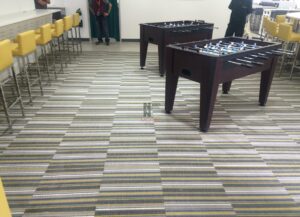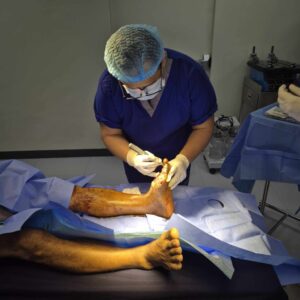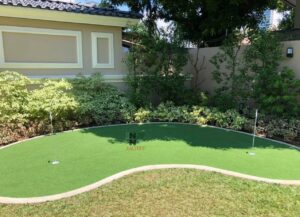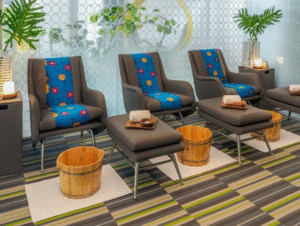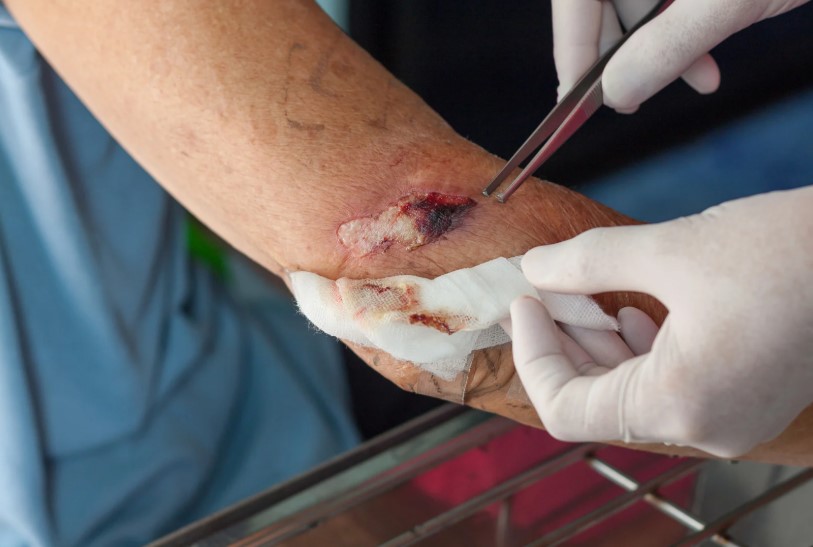Burn injuries often result in complex wounds that demand specialized attention for proper healing. Traditional treatments may not always provide the environment needed for optimal recovery, which is why advanced solutions are essential. Negative Pressure Wound Therapy (NPWT) has emerged as a proven method that enhances Burn Wound Care, promoting faster healing and improved patient outcomes. For patients seeking expert treatment, Kalingap Wound Care Clinic is the best partner to deliver professional wound management with innovative techniques like NPWT.
What is Negative Pressure Wound Therapy (NPWT)?
Negative Pressure Wound Therapy, also called vacuum-assisted closure, is a treatment method that uses controlled suction to support wound healing. The system involves a special dressing applied over the wound, a vacuum pump that applies negative pressure, and a drainage system that removes excess fluids. By creating a sealed and controlled environment, NPWT supports the natural healing process while reducing the risk of complications. In the context of Burn Wound Care, this approach has become a cornerstone for advanced healing strategies, particularly for patients with severe or slow-healing burns.
Benefits of Negative Pressure Therapy in Burn Wound Care
The primary benefit of NPWT is its ability to accelerate wound healing. For burn patients, the therapy improves blood circulation around the wound, which delivers essential nutrients and oxygen to the injured area. This is critical for tissue repair and regeneration. NPWT also reduces infection risks by actively removing bacteria and excess fluids that may accumulate in the wound bed. Another advantage is the reduction of scarring, as the therapy creates an optimal environment for skin regeneration. Patients often report improved comfort, as NPWT stabilizes the wound and reduces the need for frequent dressing changes. With the expertise of Kalingap Wound Care Clinic, patients experience these benefits under the supervision of skilled professionals.
How NPWT Supports Different Types of Burn Wounds
Burn injuries vary in severity, and NPWT can be tailored to support different types. For superficial and partial-thickness burns, NPWT accelerates closure by keeping the wound moist and clean. For deep burns that require skin grafting, the therapy enhances graft adherence and increases the likelihood of successful healing. Patients with chronic or slow-healing burn wounds also benefit from NPWT, as it promotes steady progress even in difficult cases. Real-world success stories demonstrate how patients recover faster and with fewer complications when NPWT is included in Burn Wound Care plans offered by Kalingap Wound Care Clinic.
Integration of NPWT in Burn Wound Care Plans
NPWT is not a standalone solution but rather an integral part of comprehensive Burn Wound Care. Healthcare professionals at Kalingap Wound Care Clinic carefully assess each case to determine the most effective use of NPWT. Depending on the severity of the burn, therapy duration and frequency are adjusted to maximize healing. NPWT works best alongside traditional wound care methods such as cleansing, debridement, and infection control. This holistic approach ensures that patients receive the highest standard of treatment and achieve the best possible recovery.
Advantages Over Traditional Burn Wound Care Methods
Compared to standard dressings, NPWT provides a superior environment for healing. Traditional dressings may require frequent changes, which can be painful and disruptive for patients. NPWT, on the other hand, maintains a stable wound environment for longer periods, reducing the need for constant intervention. The therapy also excels in managing wound exudates, which can otherwise cause complications if not controlled. Patients treated with NPWT as part of their Burn Wound Care at Kalingap Wound Care Clinic often experience faster recovery times, reduced risk of infection, and improved quality of life.
Safety Considerations and Limitations
Although NPWT is highly effective, it is not suitable for every patient or every type of burn. Patients with certain underlying conditions or wounds with poor circulation may require alternative approaches. Some individuals may experience mild discomfort or skin irritation, which must be monitored by trained professionals. This is why engaging a specialized facility such as Kalingap Wound Care Clinic is crucial. Their medical team ensures NPWT is applied safely, tailoring treatment to each patient’s needs while minimizing risks.
Future of Negative Pressure Therapy in Burn Care
Technological advancements continue to improve NPWT systems. Portable devices now make it possible for patients to receive treatment in outpatient settings or even at home, offering greater flexibility and comfort. Smart monitoring systems are also being developed to track healing progress in real time. These innovations promise to expand the role of NPWT in Burn Wound Care, making it more accessible and effective. With clinics like Kalingap Wound Care Clinic leading the way, patients in need of advanced treatment can look forward to more efficient and personalized care.
Takeaway
Negative Pressure Wound Therapy has transformed the way Burn Wound Care is delivered, offering patients faster healing, reduced risks, and improved comfort. By creating an optimal environment for recovery, NPWT addresses many challenges that traditional methods cannot. Choosing a trusted provider like Kalingap Wound Care Clinic ensures patients benefit from the latest techniques, professional expertise, and compassionate care. For anyone seeking the best outcomes in burn wound recovery, NPWT is a treatment option worth considering.
FAQs
What is negative pressure wound therapy in burn care?
Negative Pressure Wound Therapy uses suction to remove fluids and bacteria while promoting blood flow, creating an optimal healing environment for burn wounds.
How long does NPWT take to heal burn wounds?
The healing duration depends on burn severity and patient health. Many patients notice faster progress compared to traditional Burn Wound Care methods.
Is NPWT painful for burn patients?
Most patients find NPWT manageable, and it often reduces discomfort by stabilizing the wound and minimizing dressing changes.
Can NPWT prevent scarring after burns?
While no treatment can guarantee scar prevention, NPWT supports better skin regeneration and may minimize scarring compared to standard methods.
Is negative pressure therapy available for home burn care?
Yes, with advancements in portable NPWT devices, patients may receive therapy at home under professional guidance from providers like Kalingap Wound Care Clinic.
